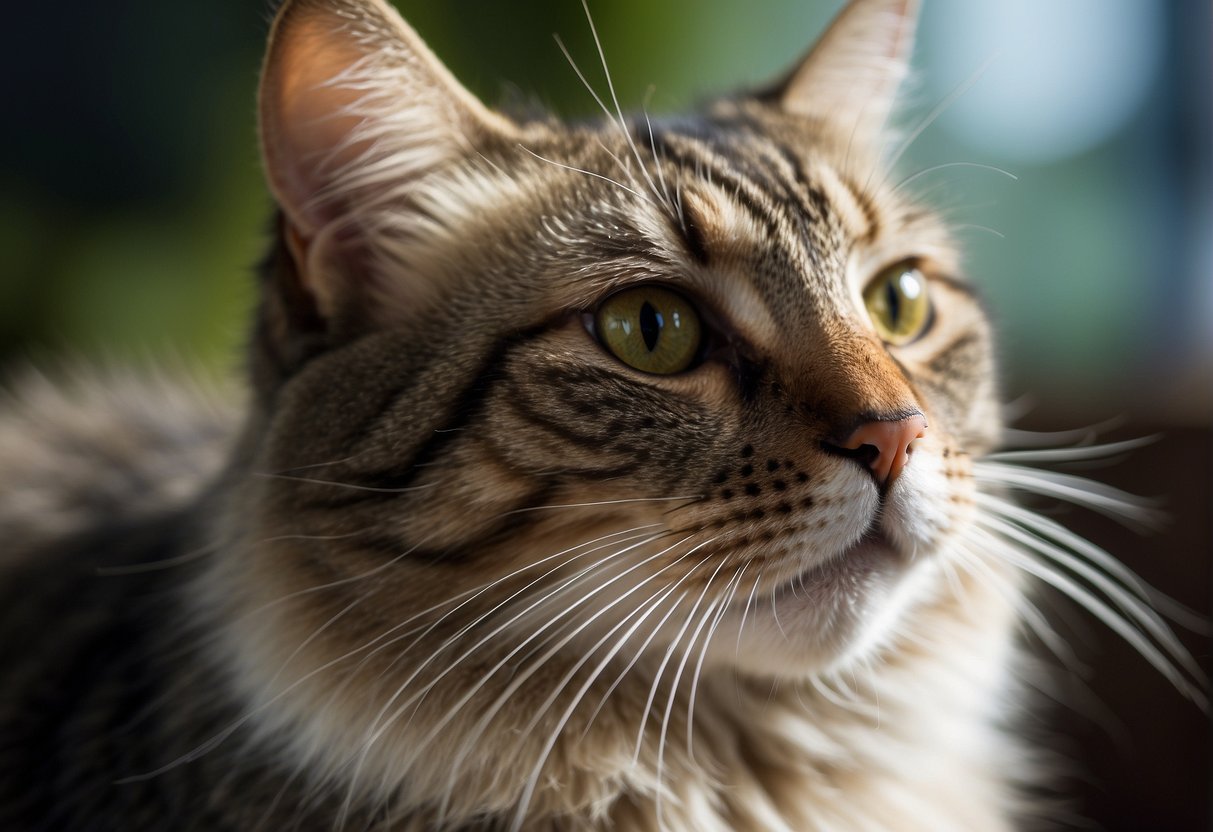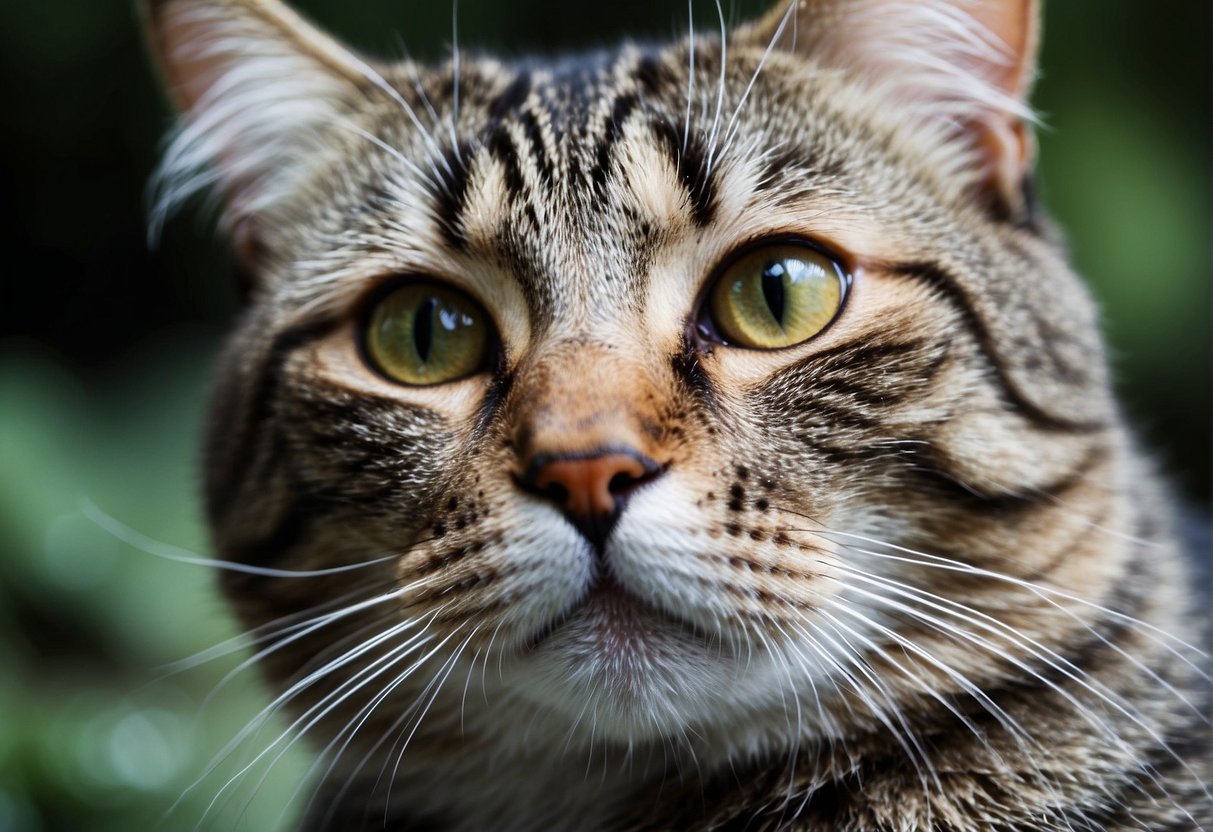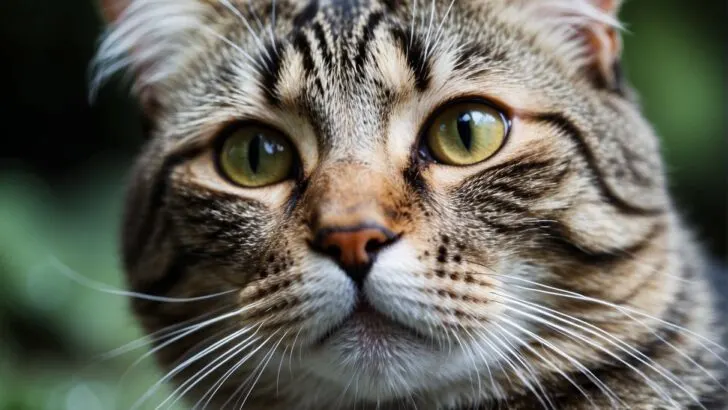Cat dandruff is a common issue that many feline owners encounter, characterized by flaky skin appearing in your cat’s coat. Just like in humans, these flakes are shed skin cells that have bunched together.
Remember, it’s often a treatable condition, and with the right care, you can help your cat get back to their sleek, comfortable self. From personal experience, ensuring your cat’s diet is rich in Omega-3 fatty acids can make all the difference in improving skin health.
My own cat, for example, showed noticeable improvements with the introduction of a higher quality food that promoted a healthier skin and coat.

Understanding the underlying causes of dandruff is the first step towards addressing it. It can stem from a variety of sources ranging from dietary deficiencies to a lack of grooming.
Regular brushing can help remove dead skin cells and distribute natural oils through the fur, which can be particularly beneficial for cats that aren’t as diligent about grooming themselves. I recall sessions where simply brushing helped not just with bonding but also in significantly reducing the flaky patches of skin.
It’s important also to consider environmental factors that may impact your cat’s skin health. Cats living in dry climates or those with insufficient hydration may develop dandruff. Adding a humidifier to your space or encouraging your cat to drink more water—perhaps through the use of a water fountain—can sometimes alleviate the dryness causing the dandruff.
Identifying Cat Dandruff

Recognizing cat dandruff is essential to ensure the wellbeing of your furry friend.
Common Symptoms
- Flaky Skin: Similar to human dandruff, you may notice white flakes in your cat’s coat or on their bedding.
- Itching and Scratching: An increase in itching and scratching can point to skin irritation due to dandruff.
- Redness: Look for areas of redness or irritation on the skin, which may be a result of excessive scratching.
Potential Causes
- Dry Skin: Indoor heating and lack of humidity can lead to your cat’s skin drying out.
- Allergies: Allergic reactions to food, environmental factors, or grooming products can manifest as dandruff.
- Parasites: Fleas, mites, and other parasites often cause flaky skin and itchiness.
- Seborrhea: A condition that results in oily or dry skin and can be a genetic issue in some cat breeds.
Preventive Measures and Home Remedies
Managing your cat’s dandruff can be straightforward if you focus on their overall wellbeing, especially by improving their diet, keeping them well-hydrated, and ensuring regular grooming practices.
Improving Diet
A balanced diet rich in omega-3 and omega-6 fatty acids is essential for maintaining your cat’s skin and fur health. Incorporating fish oil supplements or feeding your feline friend high-quality food that includes these essential fatty acids can help bolster their skin’s health. Sometimes, a small adjustment in what they eat can make a big difference.
- Example of a Balanced Diet for Cats:
- High-quality commercial cat food (look for omega fatty acids in the ingredients)
- Fish or flaxseed oil supplements as recommended by your veterinarian
Maintaining Hydration
Hydration plays a pivotal role in keeping your cat’s skin from drying out and flaking. Ensure your cat has constant access to fresh water, and you might even want to consider adding a wet food to their diet to increase moisture intake. Additionally, using a humidifier in dry environments can help maintain ambient moisture levels, benefiting your cat’s skin.
- Tips for Keeping Your Cat Hydrated:
- Multiple clean water stations
- Wet food options
- Pet-friendly humidifier in drier months
Regular Grooming
Routine brushing helps distribute natural skin oils across the fur, reduces excess hair that can contribute to dandruff, and gives you an opportunity to check for any skin issues. Use a brush or comb suitable for your cat’s coat type—long-haired breeds might need daily grooming, while short-haired cats might be fine with a few times a week.
- Grooming Essentials:
- Brush or comb for your cat’s fur type
- Regular sessions to build a habit and bond with your cat
These simple home remedies and preventive measures are often quite effective in reducing or eliminating dandruff in cats.
Treatment Options
When your cat starts showing flakes of dandruff in their coat, it’s important to address the issue with effective treatments. Here, we’ll explore how to pamper your feline friend and nip those pesky flakes in the bud.
Bathing with Specialized Shampoos
Starting with a moisturizing cat shampoo can work wonders. These shampoos are specifically formulated for felines and help to hydrate their skin.
It’s essential to choose a shampoo that’s meant for cats, as human products can be too harsh for their sensitive skin. During the bath, gently massage the shampoo into your cat’s fur to ensure it reaches the skin, which can provide relief and help reduce flaking.
Consulting a Veterinarian
If basic grooming doesn’t do the trick, it’s time to seek professional advice. Your vet can assess your cat for medical conditions that may be causing the dandruff, such as allergies, fungal infections, or infestations by external parasites like cheyletiella mites.
Depending on their findings, the vet might prescribe medication or recommend specific treatments or dietary changes to tackle the root of the problem. Remember, timely medical intervention can be critical in preventing more serious skin conditions.
Special Considerations for Cat Dandruff
When addressing cat dandruff, it’s important to consider age-related changes, the impact of obesity on skin health, and potential underlying health issues. Each factor may require a different approach to ensure your feline friend’s coat remains healthy and flake-free.
Dandruff in Senior Cats
As your cat ages, it may begin to struggle with grooming effectively due to arthritis or decreased mobility. These challenges can lead to dandruff buildup, particularly in hard-to-reach areas. Helping your senior cat with regular, gentle grooming can mitigate this issue.
Also, keep an eye out for signs of arthritis or pain during grooming sessions, as these conditions may need specific treatment.
Obesity and Skin Health
Obese cats often have difficulty grooming all areas of their body, which can lead to dandruff. By maintaining a healthy weight, your cat’s skin health can greatly improve. Initiate a weight loss plan with a vet-endorsed diet and regular exercise to combat obesity.
Additionally, consider investing in a diet with adequate omega-3 fatty acids to support skin health.
Addressing Underlying Health Issues
Underlying health issues like diabetes, hyperthyroidism, or nutritional deficiencies can manifest as skin conditions such as dandruff. If your cat’s fur appears unkempt or matted, or if you observe an increase in dandruff, consult your vet to rule out such conditions.
Early detection and treatment are crucial in managing systemic health issues that affect the skin and coat.
Monitoring your cat’s water intake is also key, as dehydration can lead to dry skin. Always ensure that your furry companion has access to fresh water. If you notice changes in drinking habits or skin condition, alert your vet, as these could indicate health complications requiring attention.

My name is James, and welcome to FAQCats!
Along with our team of cat owners, expert pet enthusiasts, and pet professionals, we aim to write engaging helpful, engaging content about cats. At FAQCats we strive to provide content that’s accurate and fun to read. Our team writes about everything related to cats; even the most complex of topics. Through extensive research and caring for our own fur-pals, we’re able to provide something cat owners worldwide will love. Have a look around, and leave us feedback anytime!

